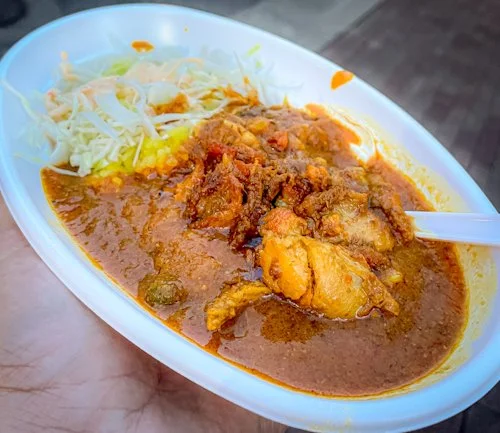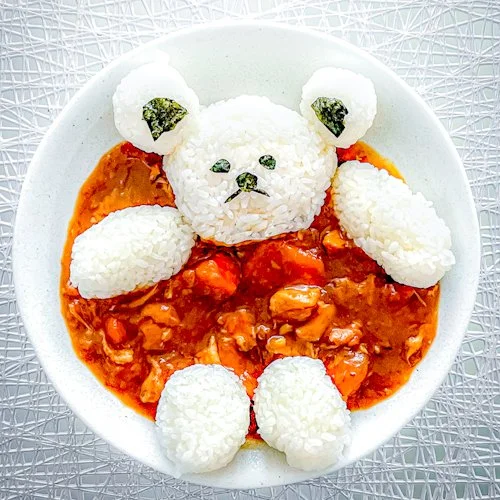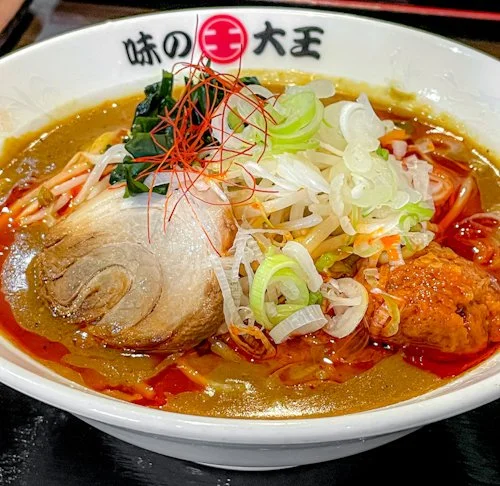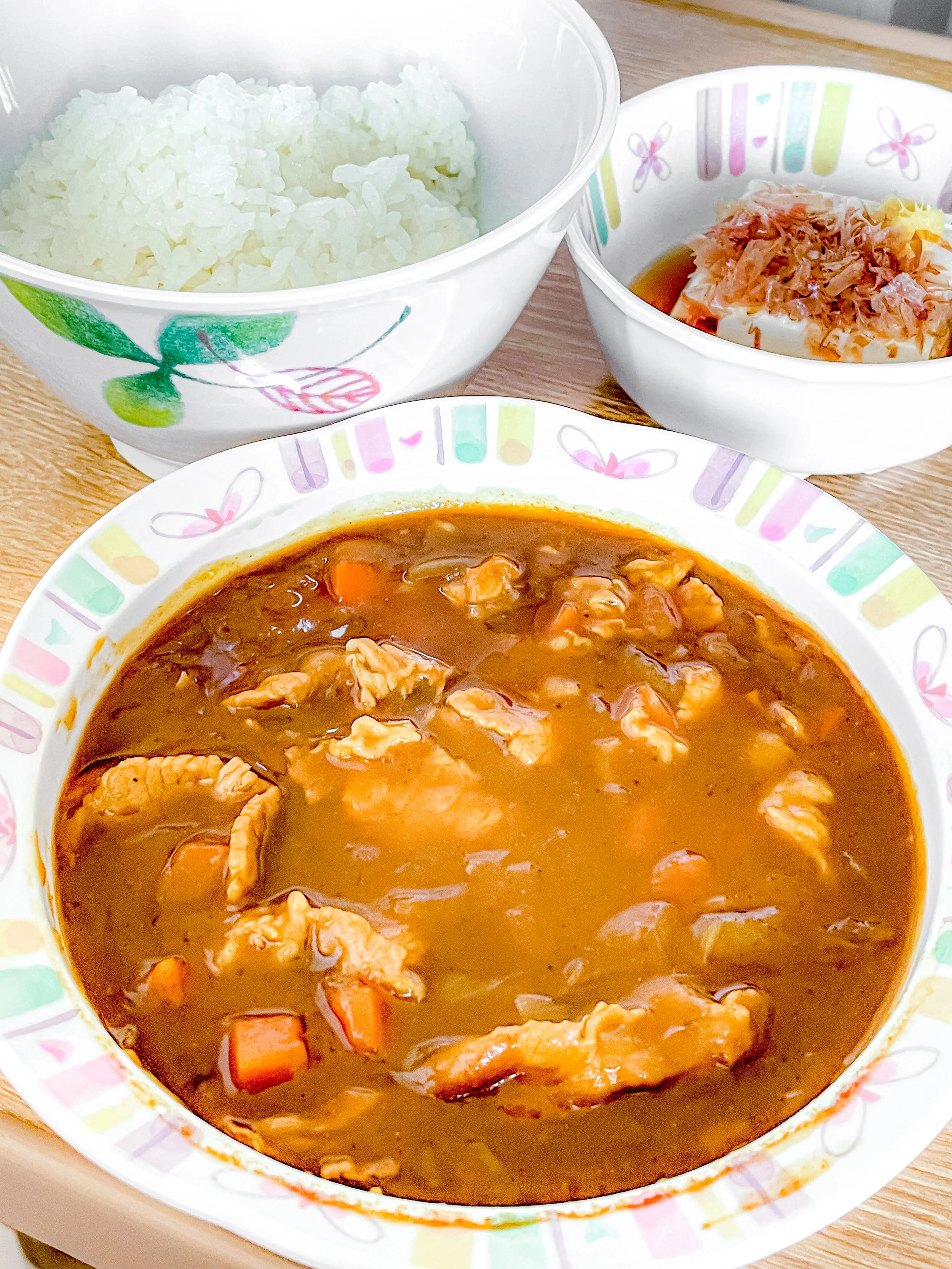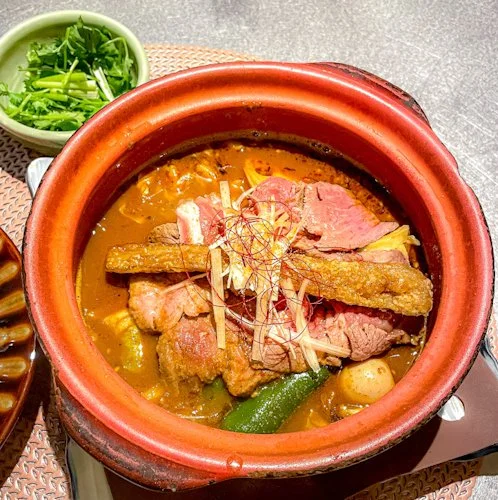Curry in Japan: Comfort Food from India via Britain
One of my favorite foods to eat in Japan is curry.
For some reason, that surprises a lot of people. Well, people who haven’t been to Japan, mainly.
“Wait,” they’ll say, “curry? Isn’t that… Indian?”
Yes… and no.
I love a good Indian curry. Though not having been to India yet, I’ve definitely enjoyed some pretty “authentic” Indian curries in Southeast Asia, North America, the UK and even Japan. Authentic, I say here, in the context of being in the fabric of the Indian diaspora.
But when it comes to curry in Japan, this isn’t that.
Japanese curry broadly falls under the category of “Yoshoku,” foods that originated outside Japan. And in the case of curry in Japan, it’s actually twice-removed from its Indian origins. That’s because curry in Japan was introduced by the British, who themselves adopted (and adapted) curry from India in the days of the Empire
Over time, curry in Japan has become as much a part of Japanese food as tempura, ramen, karaage (fried chicken) or omu-rice. The story of curry in Japan is as nearly rich and complex as its flavor.
The Curious Path to Curry in Japan
The tale of how curry became a staple in Japanese cuisine is one of cultural exchange and culinary adaptation.
Curry made its way to Japan in the late 19th century, during the Meiji era. That’s when Japan was undergoing rapid modernization and had become open to Western influences. However it wasn't Indian curry that first landed on Japanese shores, but rather a British interpretation that ended up becoming curry in Japan.
British naval officers, who had developed a taste for curry in India, brought their version of the dish to Japan. This British-style curry was already a step removed from its Indian roots, adapted to suit British palates. When it reached Japan, it underwent another transformation, evolving to match Japanese tastes and ingredients.
The Japanese military also played a significant role in the spread of curry in Japan. The dish was adopted as a staple in the Japanese Navy and Army due to its nutritional value and ease of preparation. From there, curry in Japan spread to school cafeterias and homes across the nation, gradually becoming the widely popular comfort food it is today.
The Flavor Profile: What Makes Japanese Curry Unique?
When you hear “curry,” do you anticipate the bold, complex spices of Indian curry or the fiery heat of Thai curry? If so, curry in Japan is something you might want to come in for with an open mind.
Curry in Japan is a different beast altogether – milder, sweeter and with a thick, gravy-like consistency that's more akin to a stew than what many folks might think of as curry.
I get why many of our Indian friends don’t care for Japanese curry, by the way. It’s pretty much nothing like Indian curry. For me, personally, I like both – a lot – but have never equated the two as being similar in anything other than name and a few basic ingredients.
The base of Japanese curry is a roux made from flour, oil, and curry powder. This creates a thick sauce that clings beautifully to rice. Ergo, “curry rice” or kare-raisu.
Curry in Japan is also damn good with udon noodles… yup, kare-udon. What about curry ramen, you might be asking, is that a thing? Sure is, and it’s great!
The flavor profile of curry in Japan is generally mild, with a subtle sweetness that often comes from the addition of grated apple or honey. Common vegetables include onions, carrots and potatoes, while the meat is usually beef, pork or chicken. Vegetarians make curry with tofu or other forms of protein, and/or more vegetables.
Mildness aside, Japanese curry is incredibly satisfying. It's the kind of comfort food that’s ideal for a chilly day or when you're in need of a hearty meal.
Curry in Japan: Varieties Beyond the Basic Bowl
While curry rice (カレーライス) is the most common form of the curry in Japan, Japanese culinary creativity has spawned numerous variations. Here are some you can try when eating curry in Japan:
Katsu Curry: This indulgent dish tops a serving of curry rice with a crispy, breaded pork cutlet (tonkatsu). The contrast between the crunchy katsu and the smooth curry sauce is the big draw. Other forms of fried-thing-on-curry-rice include chicken, shrimp, croquettes and much more.
Curry Udon: Thick, chewy udon noodles served in a curry-flavored soup. It's especially popular during colder months.
Curry Bread aka “curry pan” (カレーパン): A soft bread roll filled with curry, breaded, and deep-fried. It's a popular grab-and-go snack found in bakeries across Japan.
Soup Curry: Originating in Hokkaido, this dish features a thin, spicy curry soup loaded with vegetables and meat. It's a lighter alternative to the thicker, standard curry.
Curry Ramen: Seen in Hokkaido and elsewhere, this takes the slurpy goodness of ramen and adds a curry twist; it’s thicker than the aforementioned soup curry, and brings elements of spice that (if anything) are closer to the original Indian curries.
Yaki Curry: A specialty of Kitakyushu city, yaki curry is baked in the oven, creating a deliciously crispy top layer.
Curry Fried Rice (aka “kare chahan”): Fried rice may be a Chinese thing, but Japan has adopted and adapted it (as it does with many cuisines); one twist is to add curry powder (or even curry roux) and make a fried rice with a curry kick.
Curry man (kare-man): Nope, this is not a superhero of curry fame, though that would be awesome, too; this is a “manju” bun that’s filled with curry sauce and meat
There are probably other variations of curry in Japan that I’m overlooking here. But you get the gist. Curry in Japan is, we can fairly say, beloved. So with that said, where are we supposed to go eat curry in Japan?
Where to Enjoy Curry in Japan
Planning to eat curry in Japan? Me, too! I mean, I live in Japan and I’m writing this with a view out over Osaka Bay, and I’m not only drooling with thoughts about eating curry in Japan, we’re planning our next dinner at a neighborhood curry restaurant.
Chain Restaurants for Curry in Japan: Consistent, Convenient, Customizable
When it comes to chain restaurants that specialize in curry in Japan, one name stands above the rest: CoCo Ichibanya, affectionately known as "CoCo Ichi" to locals.
With over 1,000 locations serving up its famous curry in Japan (and around the world), it's practically impossible to miss CoCo Ichi. Every time I walk by (or near) a CoCo Ichibanya location, the smell calls out before I even see the sign.
What sets CoCo Ichibanya apart is its customization options. You can choose your spice level (ranging from mild to eye-wateringly hot), rice portion and an array of toppings. Want your curry with fried chicken and a boiled egg? No problem. Cheese and spinach? They've got you covered. Want a spice level 7 tonkatsu curry with large rice and extra pickles to go? You might be grabbing my order by mistake at the CoC-Ichi counter (enjoy it!).
This level of customization ensures that whether you're a novice to curry in Japan or a seasoned kare-raisu lover, you'll find something to suit your taste.
Another popular chain is Go! Go! Curry, which specializes in Kanazawa-style curry. This style is known for its dark, rich sauce and generous portions. The restaurant's name is a play on words – "go" sounds like "five" in Japanese, and their logo features a gorilla (also "go" in Japanese).
Local Shops, Mom-&-Pops: Hidden Gems for Curry in Japan
While chains offer consistency and convenience, don't overlook local shops for curry in Japan.
These often have unique recipes passed down through generations or creative twists on traditional curry. And, much of the time, curry is the only thing on the menu – so you know it’s going to be good!
In Tokyo, for example, you might stumble upon Curry Bondy in Kanda, a tiny shop that's been serving its signature keema curry since 1948. Or you could try Hakugintei in Osaka’s Honmachi district; it’s a counter-only kind of place, often with a line out the door. In Kobe, Satonaka does an amazingly flavorful curry rice, literally just one item on the menu and it’s dished up within a few minutes’ time.
When exploring what to eat in Tokyo or any other Japanese city, keep an eye out for these local curry joints. They often provide a more authentic, less commercialized experience. Hit up Google Maps and search for curry near you. Unless you’re in a touristy area, pretty much any restaurant serving up curry in Japan with a 3.2-star rating or higher is going to be good.
Benefits of Eating Curry in Japan for Travelers
Why is eating curry in Japan so popular for both travelers as well as international residents?
For starters, curry rice is generally served quickly. It’s an eat-and-go type of affair, rather than the kind of place one lingers. For on-the-go travelers who are looking to duck into a spot for lunch or dinner in between sightseeing, curry in Japan is a no-brainer.
Curry in Japan is also very popular among solo travelers. That’s because curry restaurants tend to have either counter seating, or small tables (almost cubicles, really) for one. At CoCo Ichibanya, they even have a whole wall full of manga (comic books) and magazines available for your reading pleasure.
Travelers also appreciate eating curry in Japan because it’s pretty easy to order. The menus are often available in English and usually have pictures, too. Many staff at curry restaurants in Japan are themselves not Japanese, and so there’s little if any stigma or fear or judgment for non-Japanese coming in looking for a meal.
Making Curry at Home: Souvenir of Your Time in Japan
Have you eaten curry in Japan? If so, you might want to recreate it for a meal at home sometime. Well, you’re in luck!
One of the reasons for curry's popularity in Japan is how easy it is to prepare at home. Many Japanese households rely on curry roux blocks, which are readily available in supermarkets. These blocks contain a mixture of spices, flour, oils and other flavorings, making it simple to whip up a pot of curry even for novice cooks.
To make curry at home, Japanese families often start by sautéing onions, then adding meat and other vegetables. Water is added, and everything is simmered until the vegetables are tender. Finally, the curry roux is mixed in, creating that characteristic thick, flavorful sauce.
This ease of preparation, combined with its hearty, satisfying nature, makes curry in Japan a go-to meal for busy families, students, and anyone looking for a comforting home-cooked meal.
Curry in Japan makes for a great souvenir to bring home! Supermarkets have a dedicated curry aisle, where you’ll find all sorts of brands, varieties and packaging options. The curry roux blocks are the most popular format and probably the most convenient to carry back. Some packaged curry comes in a pouch with the sauce already made; the instructions will tell you what to do at home, e.g. add more water or just heat it up. Some packaged curry in Japan that makes a nice gift includes the Yokosuka Navy curry, as well as Hanshin Tigers curry (for fans of the baseball team).
Curry's Cultural Impact in Japan
Curry has become so ingrained in Japanese culture that it's considered one of the nation's most popular dishes. It's a common meal in schools, workplaces, cafes and homes across Japan.
The dish even has its own emoji (🍛), which specifically represents Japanese curry rice. What does that tell you about curry in Japan?!
Curry has also made its way into Japanese popular culture. It's often featured in anime and manga, either as a character's favorite food or as a plot device.
Regional Variations of Curry in Japan: Local Flavors, Local Pride
Much as ramen has distinct regional styles across Japan, curry too has been adapted to local tastes and ingredients in different parts of the country. Here are a few regional curry specialties.
Hokkaido Soup Curry: As mentioned earlier, this soup-like curry is packed with local vegetables and often features a whole chicken leg.
Nagoya Curry: The curry in Japan’s Chubu region, centered on Japan’s 4h largest city of Nagoya often incorporates red miso paste, giving it a rich, complex flavor.
Yokosuka Navy Curry: This style of curry, originating from the naval base in Yokosuka, is known for its rich, dark color and the use of beef giblets.
These regional variations showcase the embracing & adaptation of curry in Japan’s many distinct regions, with each area putting its own unique spin on the dish.
The Future of Curry in Japan: Innovation, with Respect for Old School
As with many aspects of Japanese culture, the world of curry continues to evolve while maintaining respect for the OG Japanese curry.
Some modern curry shops are experimenting with new flavor combinations, incorporating ingredients like green tea or chocolate into their recipes. Others are focusing on health-conscious versions, creating vegetarian or low-calorie curries.
There's also a growing interest in exploring the roots of curry, with some restaurants offering more authentic Indian or Thai-style curries alongside their Japanese versions. This allows curry lovers to appreciate the full spectrum of curry styles, from traditional Japanese interpretations to more global flavors.
Indian Curry & Thai Curry in Japan
Since we’re on this subject, let’s say you’re not a fan of curry in Japan (it’s not blasphemy, and we’re not here to judge!). Can you get an authentic Indian curry or Thai Curry in Japan?
Yes!
You’ll have to search harder for it, as the “real deal” (if you will) is less common than Japanese curry in Japan, of course. But it’s here.
The most reliable way is to ask an Indian person where they like to eat Indian curry in Japan; or ask likewise of a Thai person living in Japan. They’ll be happy to let you know. And, especially in the case of Indian food, it’s likely to be pretty good – that’s because, at least in the bigger cities in Japan, there’s usually a sizable enough Indian community to support these restaurants.
Your other option is to search Google for Indian curry or Thai curry in Japan near you. Best way to filter out the info is to look for reviews that are written by people with an Indian name, for example. Not to say that a Japanese person’s view of an Indian curry in Japan would be wrong, but they might not be looking for the heat, flavor or “authenticity” of Indian food as opposed to their accustomed taste of curry in Japan.
Conclusion: A Dish That Tells Japan's Story
Curry in Japan is a dish that tells the story of modern Japanese culture.
It reflects Japan’s ability to take foreign influences and transform them into something uniquely Japanese. Curry in Japan also shows the importance of convenience and customization in Japanese food culture.
So the next time you're planning what to eat while visiting Japan, or specifically pondering Tokyo what to eat options, don't overlook curry in Japan. Whether you're diving into a steaming bowl of curry rice at CoCo Ichibanya or discovering a hidden local curry shop, you really can’t go wrong with this popular form of Japanese comfort food.



